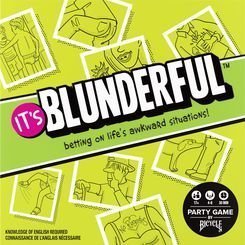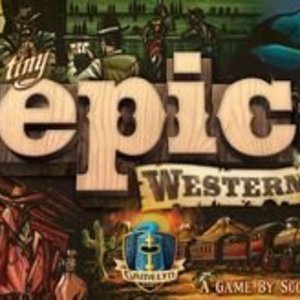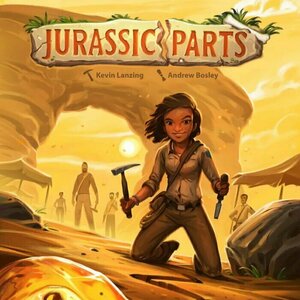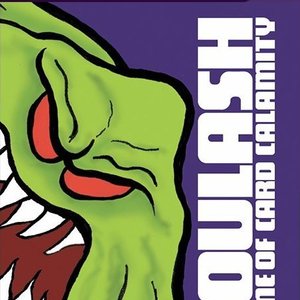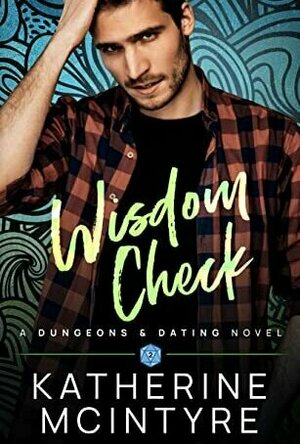
Wisdom Check (Dungeons and Dating #2)
Book
Julian’s boss is newly single, ridiculously hot, and looking his way. He’s so screwed. Cal...
Contemporary MM Romance

Noah’s Ark – An Interactive Children’s Bible Tale
Book and Education
App
This is the classical biblical story of Noah and the ark he built upon God’s instruction to save...
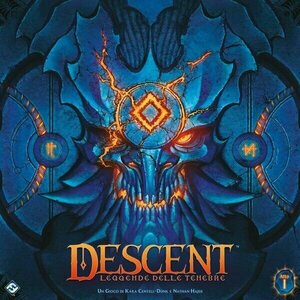
Descent: Legends of the Dark
Tabletop Game
Terrinoth is in peril. The demon-tainted Uthuk Y'llan barbarians stalk the realm and the undead...
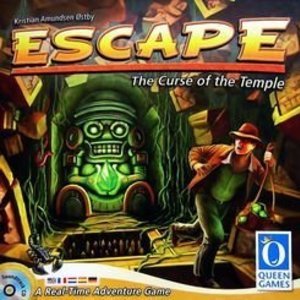
Escape: The Curse of the Temple
Tabletop Game
Escape: The Curse of the Temple is a cooperative game in which players must escape (yes...) from a...
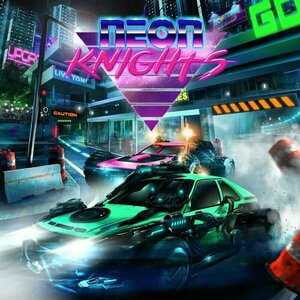
Neon Knights: 2086
Tabletop Game
Do you have what it takes to join the Neon Knights? Join the XRL (Extreme Racing League) Tournament...
Purple Phoenix Games (2266 KP) rated It's Blunderful in Tabletop Games
Jun 12, 2019 (Updated Jun 12, 2019)
This is a straight up party game where you are bidding your VPs to answer questions about the person reading the question cards. We have all played games like this, right (Say Anything, anyone)? Well, this is in a similar vein, but the situations and scenarios printed on the cards here are a little more updated and unique. The genre and playstyle are not at all unique, mind you, but this may still have some value for some families.
On your turn you read a card that has an awkward scenario and three answers that you will need to answer for yourself how you would/or probably could see yourself reacting. Choose your answer card (A, B, C) and place it face-down in front of you. Every other player will have a score board that they will wager 5, 10, or 15 of their points to match your answer. Get it right and you gain the amount of wagered points. Get it wrong, and you fall that many points. The first player to reach 100 points is the winner!
Components: this game has a few different components, but the vast majority is a whomping stack of question cards. The cards are great Bicycle quality cards, and are easy to read. You also receive in the box eight dual-layered scoreboards with notches to keep your translucent scoring cube safe and bump-proof. The boards are great quality and the cube is a normal smoke-colored translucent cube (see below). No problems with components at all here.
I am going to just admit that I am not a huge fan of party games. Maybe once upon a time I liked them quite a bit, but it seems to me that many party games are just variations of the same game over and over. This one doesn’t really break the mold here, either, but it is enjoyable. The awkward situations are unique and the answers are mostly humorous. When we were playing my brother, Bryan, mentioned that he liked this game because it gave him alternatives to how he would normally react in these situations, so it was somewhat educational for him. I wouldn’t necessarily go that far, but I believe if you are a fan of party games, you can’t really go wrong with this one. Purple Phoenix Games gives this title an positively awkward 12/18
https://purplephoenixgames.wordpress.com/2019/06/11/its-blunderful-review/

Rules of Sailing Tips
Sports and Education
App
Sailing on Starboard or Port- on same or opposite tacks- tips to steer your boat the "Right of Way"....
Purple Phoenix Games (2266 KP) rated Tiny Epic Western in Tabletop Games
Dec 30, 2021
Disclaimer: I do not intend to rehash the entire rulebook in this review, as there are just too many details, but will instead provide a more general overview of the rules and gameplay. -L
Tiny Epic Western is a game of worker placement and set collection in which players are trying to amass the most end-game victory points. Played over a series of rounds, players will be placing their Posse (Meeples), collecting Influence and taking actions, dueling opponents (if necessary), playing a bit of poker, and buying buildings in an effort to become the most powerful boss in this wild west town. To setup for a game, place the Location Mats as described in the rules, dealing a Building Card where appropriate. Each player receives a Boss card, 3 Posse tokens (Meeples), and one of each of the Influence trackers (Money, Law, and Force), placed on the 1 space of their card. Shuffle the decks of Building Cards and Poker Cards separately, choose a starting player (who receives the Dealer token), place the Wanted card/Gunslinger dice in the center of the play area, and the game is ready to begin! Pictured below is the starting setup for a 3-player game.
The game is played over 6 total rounds, each of which is broken into 4 phases: Shuffle and Deal, Posse Placement, Resolution, and Buy. To start a round, the Dealer shuffles the deck of Poker cards, and then deals 1 card face-up to the 6 empty spaces between the Location Mats. One Poker card is dealt face-down to the Rival Space (under the Town Hall Location Mat), and 2 Poker cards are dealt face-down to each player. Players look at both of their cards and pick 1 to keep, discarding the other. The round then moves to phase 2: Posse Placement. Starting with the Dealer, players will take turns placing Posse tokens onto the placement spots on any of the Location mats. All placement spots grant unique benefits (collecting different Influence or performing Building card actions) that are performed either immediately or during later phases of the round. What happens if an opponent took a placement spot that you wanted? Then it’s time for an old-fashioned duel! The dueling players each roll a Gunslinger die, modify it if they so choose, and determine a winner. Players continue taking turns placing Posse tokens until all available Posse tokens have been placed.
When all Posse tokens have been placed, the round moves to phase 3: Resolution. The first step of this phase is to reveal Poker cards – all players reveal their cards, and the card in the Rival Space is also revealed. Moving clockwise from the Town Hall, each Location will be resolved by ‘playing’ three-card poker. Each Location has 2 Poker cards directly adjacent to it (placed between the Locations in phase 1), and those 2 cards plus the one in your hand will form your Poker hand. Any players with Posse tokens on the Location will compare their Poker hands to determine a winner. If you win the hand, you collect the Winner’s Pot (extra benefits) and are able to collect any delayed benefits from placement spots in the Posse Placement phase. Losing the hand earns you nothing *womp womp*. If you are the only Posse on a Location (with no opponents) you will compare your hand to that of the Rival. The Rival’s hand uses the cards adjacent to the Town Hall, plus the revealed card in the Rival Space. If you have a better hand, you win the benefits on your Location. If the Rival wins, though, you do not collect these benefits. All Locations are resolved in this fashion before the last phase of the round, Buy, begins.
To start this phase, all players will compare their three-card Poker hands using the 2 Poker cards adjacent to the Town Hall. The player with the best hand will act first in this phase, followed by the next best hand, and so on. The first player may now choose to buy a Building card from any Location on which they have a Posse token. Pay the requisite amount of Influence to purchase a Building, and add it to the Porch Slot on your color-corresponding Location Mat. The power granted by this Building card is now available for use in future rounds. Once all players have had the option to purchase a Building, the player with the best hand will advance one of the Industry Tokens at Town Hall. The placements of Industry Tokens will affect end-game scoring, so keep that in mind as the game progresses. When all steps of the Buy phase are performed, the round now ends. Players collect all their Posse tokens back to their boss cards, all Poker cards are collected and re-shuffled, new Building cards are dealt to Locations from which they were purchased this round, and the Dealer token is passed to the next clockwise player. If a player did not buy a Building at all during the round, they have gained the Third Posse Benefit for the coming round – granting them an additional Posse token to place during phase 2. Otherwise, all players will only ever have 2 Posse tokens to place.
After a total of 6 complete rounds, the game ends and points are tallied. Victory Points are earned from Building cards bought throughout the game. Building cards have a specified VP amount, and also have a collection of Industry Icons on them. Using the final placement of the Industry Tokens on the board, players will earn points for Industry Icon sets they have collected. And finally, whomever holds the Wanted card (won the last duel) gains an additional 2 VP. Points are all counted, and the player with the highest score is the winner.
That all probably sounds pretty complicated. But I do have to say that verbally explaining/teaching the game (and being able to use components for examples) is waaaaay easier than doing so through a text review. So please do not let the seemingly complex gameplay turn you off from this game. Once you get a basic understanding of the phases of each round, the game moves along pretty seamlessly. Honestly, the biggest learning curve for me to conquer was playing three-card poker. As someone who has never played any form of poker before, this was probably what had me most hesitant about learning TEW. After having played it now, three-card poker really isn’t too complicated, and there are some nice player reference cards to help you figure it out.
Aside from the poker element, this game really comes down to worker placement and strategy. Each Location card only has a finite number of placement spots, and the resources required to buy Buildings are not exactly in abundance. This affects your strategy, as you must decide which resources to collect at what times, as well as deciding whether you need to duel someone for a coveted resource. Another element to your strategy? You may only buy Building cards from Locations on which you have a Posse token. Maybe none of those placement spots really appeal to you this round, but you reaaaaally want that specific Building card. Are you willing to ‘burn’ a Posse token for the chance to buy it? Or is there a different Location that offers a useful resources and a desirable Building card? Also, keep in mind how your poker hand will come into play. Since poker cards are dealt to each Location at the start of a round, you are able to see what your hand will be for each Location. Maybe you have a pretty strong hand at the Bank Location, but at the Courthouse the cards end up being a bust. Are you willing to risk a placement in hopes that you have the best hand of the bunch? Because remember – if you don’t have the best hand at a Location, you get no resources/rewards! There are so many elements to a successful strategy with this game, and it really keeps all players engaged at all times. Be warned though – the variety of strategic options could be difficult for some AP-prone players.
Let me touch on components for a minute. As with all Tiny Epic games, the production quality of TEW is pretty stellar. The cards are nice and sturdy, and the iconography is clear. The Posse tokens are cute Meeples with cowboy hats, and they are nice and chunky. The only thing I don’t really like about this game are the Gunslinger dice. In theory, they are super cool, but in actual execution, they leave much to be desired. The numbers aren’t really clearly define, so they’re a bit tricky to read. Aside from that, a pretty high quality game here.
So all in all, how does Tiny Epic Western stand up in the series? It is definitely one of the heavier games of the bunch, and there is so much more going on than initially meets the eye. It feels daunting for the first few plays, but once you get the phases under your belt, it really flows pretty well. I can’t say that it is my favorite Tiny Epic game, as I just personally feel like there are too many elements going on at the same time. You’re strategizing your worker placement, but also need to consider buying Buildings for VP and to collect sets of Industry Icons and for their specific abilities, as well as figuring out your poker hand for 5 different Locations, and dealing with duels. Some people might really be into that amount of strategic forethought, but it feels a bit cumbersome to me. That being said, Purple Phoenix Games gives this three-card poker game a 3/6. The gameplay is decent, just not really my kind of game.
Purple Phoenix Games (2266 KP) rated Jurassic Parts in Tabletop Games
May 31, 2021
Jurassic Parts is an interesting mix and spins of area control, enclosure, and set collection for two to five players. In it, players are all paleontologists bent on claiming the biggest and best bones from a giant slab of rock containing dozens of dino species. The catch? Each paleontologist is trying to claim the bones for themselves. Sharp wit, good luck, and a bevvy of sharpened chisels spells success and fame for the paleontologist who wins at collecting Jurassic Parts.
DISCLAIMER: We were provided a copy of this game for the purposes of this review. This is a retail copy of the game, so what you see in these photos is exactly what would be received in your box. I do not intend to cover every single rule included in the rulebook, but will describe the overall game flow and major rule set so that our readers may get a sense of how the game plays. For more in depth rules, you may purchase a copy online or from your FLGS. -T
To setup, set aside one of the Pile of Bones (a wild card, of which there are several in the game) and shuffle the rest of the tiles. Split them into two stacks, flip one stack face-down, and build a slab around the Pile of Bones set aside earlier. This creates the slab of rock the players will be splitting. Each player receives their choice of paleontologist character sheet, chisels in their chosen color, and any pre-start resources per the rulebook. The slab is now ready for splitting!
On a turn, the active player will have several options. Firstly, however, the player must sharpen three chisels by moving them from the Dull Chisels are on the right of their sheet to the Sharp Chisels area on the left. Now the player may place their chisels anywhere on the slab, as long as it is on the gap between two tiles. The purpose of this is to create a wonky line of chisels that will break off sections of the slab from the larger chunk. Players will need to beware of rock piles on either side of their preferred placement, as each rock icon on either side of the placement will require an extra chisel to be dulled and discarded. If a chisel placement would cause a line to be completed, a hunk of the slab is separated from the master slab. Players consult with the line of chisels (as shown below) to determine which player has contributed more to the split than the others. This will rank out all contributing players. The player with the most chisels contributed will be able to claim their choice of HALF of the tiles split off, rounded UP (so a player would receive five tiles from a nine-tile split). The next player in contribution order will then have their choice of HALF of the remaining tiles, rounded UP (so the second player would receive two tiles from the previous example, as there would be four left). Subsequent players would then receive HALF of what is left until all tiles have been claimed, or there remains just one tile. This final tile is then given to the Field Leader for his collection.
In addition to this splitting and claiming on a turn, the active player may also make transactions with the Field Leader at any point during their turn. Actions that can be taken while transacting with the Field Leader are selling one tile to him in exchange for an Amber piece, spending Amber to: ignore rocks on the subsequent two chisel placements, sharpen two additional chisels this turn, take any of the leftover fossil tiles from the Field Leader, or take any fossil tile from the slab (as long as it doesn’t create a split). The first action from the Field Leader will cost the player one Amber. Should they wish to enact another action, its cost is two Amber. Subsequent actions on the same turn cost three Amber each.
As you will notice, fossil tiles from the slab will show plant fossils, Pile of Bones (wild), or actual bones belonging to specific dinosaurs. These specific bones will show an alphabetic letter pair icon to denote to which dinosaur it belongs. If, at the end of the game, players are able to assemble the correct type of fossil tiles belonging to specific dinosaurs, they will score many more points than if the dino skeleton were incomplete. For example, at the end of the game, each fossil tile is worth 1VP if from an incomplete skeleton. However, should a player have completed a Velociraptor skeleton, they will receive 4VP for those two tiles. A completed Triceratops scores 7VP, a T-Rex scores 10VP, a Brachiosaurus scores 15VP, and a tiny Pterodactyl scores 1VP for a complete skeleton because it spans only one tile. The Pile of Bones tiles in the game can be used in place of any other fossil tile to complete a skeleton, and Plant tiles score increasingly more points for a larger collection of them.
Play continues in this fashion of sharpening and placing chisels, breaking off sections of the slab and claiming fossil tiles, and utilizing actions at the Field Leader until all slab tiles have been assigned. The player with the most points from complete and incomplete skeletons and plants will be crowned the winner and the greatest paleontologist in the land… until the next playthrough.
Components. You know how you come to expect certain things from publishers, and can just imagine the quality of the game you are about to receive before seeing it? Such is the case with 25th Century Games. I KNOW that I will be receiving a quality product every time, and this certainly is no exception. The fossil tiles are great and sturdy. The chisels are neatly-designed and multifaceted (which I appreciate, as it would be easy to include tubular chisels and have them rolling around the table everywhere). The amber bits are the typical gemstones you find in Century: Golem Edition, but are the absolute PERFECT color and usage for this game. And did you see that first player marker? It’s a mosquito inside a polished amber stone. I mean, COME ON! How perfect is that? I’m excited just TALKING about the components. I haven’t even touched on art yet, and this is longer than most of my components paragraphs. The art is fabulous. It fits the game and the theme so perfectly – I could not have chosen a better fit myself. Has 25th Century Games set the bar too high for themselves, or will they continue to offer high quality games from here on out? I cannot wait to find out!
So sure, it looks great, but what about the gameplay? Do the art and components merely shield a mediocre game? No. Not at all. Being able to place chisels anywhere you like on the board offers players a freedom that is refreshing, but weighing that against the pressure to contribute to an existing or emerging line of chisels so that you are included in the split is just wonderful. Contemplating turns to sell off fossil tiles in order to earn enough amber to gain more chisels, or bypass rocks, or simply take the perfect tile for your collection offers just enough tacticization (why isn’t that a word…) to warm up the brain without indulging the AP in some players.
This is not at all a heavy game, and it certainly doesn’t need to be. It is just a fun time with friends and family that utilizes interesting twists of mechanics that I enjoy. It feels reminiscent of several games (hints of Through the Desert and a twist on I Split You Choose), but it entirely its own design. Purple Phoenix Games gives this one very rewarding 10 / 12. I generally enjoy most dinosaur-themed games, I understand, but this one sits among the best I have played. If you are looking for something that feels both familiar and fresh, with incredible art and components, you need to grab a copy of Jurassic Parts. There are just so many interesting choices to be made and strategies to attempt. I think I will setup a game right now. Want to come play?
Purple Phoenix Games (2266 KP) rated Ghoulash: The Game of Card Calamity in Tabletop Games
Sep 3, 2019
In Ghoulash: The Game of Card Calamity (which I will shorten to Ghoulash for the purpose of this review – even though there is the OG Ghoulash as well, I think you know what I’m talking about) players are Ghoul hunters. Ghouls are monstrous green blobsters that are coming for you. You fight them by shooting Ghoo, a purply substance, at them to exploit their weak spots and vanquish them. The first Ghoul hunter to reach 10 Victory Points (VPs) will be crowned the winner!
DISCLAIMER: We were provided a prototype copy of this game for the purposes of this review. As this is a preview copy of the game, I do not know if the final rules or components will be similar or different to what we were provided. -T
To setup the game, shuffle the deck and place a 6×3 grid of cards in the middle of the table. This is the “floor” and will be the game board for the duration of the game. When the floor is out of cards (I will explain), set out a new 6×3 grid floor and continue play. Deal each hunter a hand of seven cards and you are ready to play!
Each of the face down cards that comprise the floor are opportunities for encounters. You, as a Ghoul hunter, will enter the floor from any border card. On your turn you may fill your hand up to your current hand limit – which changes based on whether you have taken wounds or not. Next you must move orthogonally onto a space that contains a card or an empty space, but you must move – or take your Action first, THEN move. If you move to a space with a card, you encounter the card. Depending on what type of card is flipped face up you will be taking cards into your hand, following Command instructions, or fighting Ghouls. When you have finished your turn it is the next hunter’s turn.
Should your flipped card reveal an Action or Special card, you simply collect the card into your hand. If the flipped card is an Battle card (which has Ghoo splats – like the ones pictured above on the far right), you must follow the Command instructions at the bottom of the card before collecting to your hand. And if it’s a Ghoul you will begin battle!
Battling Ghouls is mechanically simple, but the overall battle may not be. When you face a Ghoul its card will tell you what the strength of the monster is (the white number). It could have four, five, or six hit points (HPs). To vanquish the Ghoul you will need to play cards whose Ghoo value (splats) is equal to or greater than the Ghoul’s HP amount. From this point the other hunters can intervene in the battle by playing cards whose battle Ghoo tips the scales toward the Ghoul thus making it more difficult to defeat (a la the ganging up mechanic in Munchkin). As only one hunter may affect the battle in this way, it is the player’s cards whose strength is greater that wins the challenge. Now the original combatant must spend more Ghoo cards to overcome the super-buffed Ghoul. Should the hunter prevail they will collect the Ghoul card and display it in front of them to show the table how many VPs they have earned. If the hunter is unsuccessful in the battle, they suffer wounds in the amount of VPs that would have been awarded with a successful battle (the green dots at the bottom of the card). Wounds are reflected by cards in hand, so if a hunter suffers two wounds, their hand limit is now five instead of the original seven. Play continues in this fashion until a hunter has accumulated 10 VPs and earned victory!
Components. Per my disclaimer, the game that was sent to us is a prototype version of the completed game, so components may (and probably will) change or be improved as a result of further development, and/or a successful Kickstarter campaign. That said, I can comment only on the components that were provided to us. The game is a deck of cards in a deck box. The cards themselves are of fine quality. The art upon them is okay. Nothing too stellar, but it gets the job done. I think the art is one thing that can be improved with development. Don’t get me wrong, the art is not at all bad. Perhaps it’s the card layout or graphic design. Something with a bit more punch would be appreciated.
Our thoughts on this one are that it needs some sprucing up a bit. Yes, it is in prototype format currently, and we know that. The card design needs to be updated a bit, but the game itself was also lacking a bit. One of the major concerns we had when playing through it was the card grid of the floor. We did not use any sort of player marker, token, meeple, or anything to mark our locations, and I really think that may have helped. We just had a hard time visualizing where our hunter was in relation to the face-down cards and how many turns it would take us to travel to them. There were several times where we just guessed as to who was actually closer and they were able to encounter the card. I am unsure how to fix that without supplying a grid or some sort of tracker. We should have maybe just played with meeples or dice for position markers. Oh heck I just thought of this: we could have also placed out dice or whatever on an x and y axis to denote where floor cards should be. Ugh. Battles were run somewhat smoothly, even though there were times where I was down to one card because I had suffered so many wounds and I could not get a First-Aid Kit to save my life (literally). The battle challenges did not work with us and we were trying to find a good way to make them happen, but our minds must not have been at their peak. We weren’t quite sure if, like in Munchkin, you could just add one card to your challenge total, or if you had to commit the entire bunch of cards you wish to play. It is not clear in the rules, so we went with our guts.
Overall, this could be a good dungeon crawler type card game. The theme is good, but for us it didn’t quite click…yet. If it sounds like something you would like to have in your collection, check Kickstarter for the campaign (if Ghoulash Games decides to crowd-fund this), contact the publisher directly, or (depending on date you read this) purchase from your FLGS. Oh, and keep the Ghoo Gone away – this time Ghoo is good for your health!
